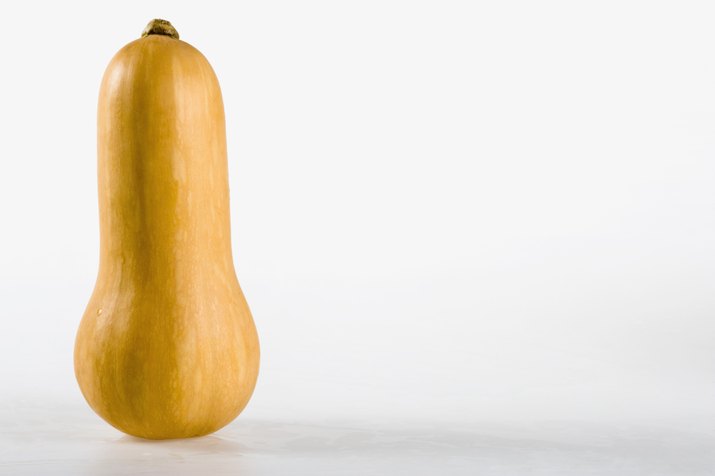 1 of 10
1 of 10
Overview
Throughout the year, our bodies crave rich and creamy comfort foods and decadent sweet treats. While these are absolutely fine in moderation, always make sure you get your fix of fruits and veggies, too. In-season vegetables can often hit that savory spot if you prepare them creatively, and local seasonal vegetables are inexpensive and eco-friendly to boot. You'll find that in-season vegetables are richer in flavor which makes for delicious meals and side dishes.
Brand X Pictures/Brand X Pictures/Getty Images  2 of 10
2 of 10
Asparagus
Asparagus grows year round, though spring is the best season to consume it. "Grilled or steamed asparagus is easy to prepare and tastes delicious," said registered dietitian Lisa Cohn of Park Avenue Nutrition in New York City. She suggests drizzling a simple white sauce on top. To create the sauce, melt a tablespoon of butter with 1.5 tablespoons of flour in a saucepan over low heat. Add a 1/2 cup of broth, 1/2 cup of half and half and whisk in 2 tablespoons of spicy mustard, 1 tablespoon of lemon juice and pepper to taste.
Related: R.D. Lisa Cohn; Park Avenue Nutrition;New York City
Jupiterimages/liquidlibrary/Getty Images  3 of 10
3 of 10
Fennel
Fennel thrives best in the summer through early fall. It has a slightly sweet, almost licorice quality and a hearty crunch that adds great texture. Try adding sliced fennel to a traditional frittata. Saute finely chopped garlic in a skillet, then add eggs, fennel, pepper and salt. Cover and let cook through before serving.
Jonathan Lovekin/Photolibrary RM/Getty Images  4 of 10
4 of 10
Squash
Fall/Winter squashes include acorn, spaghetti and pumpkin and come into season during the early fall and last into the winter. Summer squashes include zucchini, scallop and crookneck, and thrive from early spring to late summer. You can serve squash many ways, including diced and sauteed, baked or pureed.
Polka Dot Images/Polka Dot/Getty Images  5 of 10
5 of 10
Potatoes
"Potatoes are loaded with vitamin C and are high in potassium," noted Cohn. You can enjoy them mashed, baked, sauteed or sliced as fries. For something a little different, Cohn suggests trying them scalloped. She says to "place thinly peeled and sliced potatoes in a glass dish. Add milk mixture and dabs of butter." Dust with paprika and bake at 375 F until potatoes are soft and slightly brown, about one hour. Potatoes grow year round, but taste best during summer harvest.
Related: R.D. Lisa Cohn; Park Avenue Nutrition;New York City
Jupiterimages/Creatas/Getty Images  6 of 10
6 of 10
Spinach
Dark and leafy greens, including spinach, are loaded with folate, iron and vitamin B, said Cohn. This dark leafy green thrives best in spring and summer and temperate climates in the winter. To take some of the bitter edge off spinach, sauté and then add 1/4 cup of almond milk or creamer to make creamed spinach. Also try adding fresh herbs like rosemary and garlic for a deeper flavor profile.
Related: R.D. Lisa Cohn; Park Avenue Nutrition;New York City
Stockbyte/Stockbyte/Getty Images  7 of 10
7 of 10
Carrots
Carrots are great as a crisp snack, roasted or sauteed, and thrive during cooler seasons. Cohn suggests making a winter vegetable chowder with carrots and other seasonal vegetables, including onion, celery and corn. "Mix 4 cups of chopped vegetables, saute in 2 tablespoons of olive oil and add 1 teaspoon of red pepper flakes, 3 garlic cloves peeled and pressed, a dash of salt and black pepper," she said. Cook until all the veggies are soft; add 3 cups of broth, a cup of milk and 1/2 cup of cream and cook until all the flavors are combined.
Related: R.D. Lisa Cohn; Park Avenue Nutrition;New York City
Michael Blann/Digital Vision/Getty Images  8 of 10
8 of 10
Sweet Potatoes
"Sweet potatoes are rich in beta carotene and are great for boosting your vision during the winter season," Cohn said. Because sweet potatoes — which thrive in the fall — already have so much flavor, she suggested keeping things simple by sprinkling nutmeg or cinnamon on top and baking.
Related: R.D. Lisa Cohn; Park Avenue Nutrition;New York City
Anthony-Masterson/FoodPix/Getty Images  9 of 10
9 of 10
Cabbage
Cabbage's bright and crispy texture can be a nice addition to almost any meal. Try shredding red cabbage and then tossing with olive oil and sea salt. Roast at 350 F for 25 minutes; add a piece of fresh salmon topped with olive oil and spicy mustard, and bake for another 15 minutes. You'll have your protein and veggies without much preparation. Cabbage thrives from mid fall through the winter.
Hemera Technologies/AbleStock.com/Getty Images  10 of 10
10 of 10
Artichoke
This green spring vegetable may look strange, but it's a tasty addition to any meal. Artichokes are high in fiber, potassium and iron. To prepare, slice off 3/4 in. of the tip, remove excess stems, rinse in cold water and steam with lemon juice and bay leaves for 30 to 40 minutes. Peel off the petals and serve with dip or melted butter.
Ablestock.com/AbleStock.com/Getty Images










































